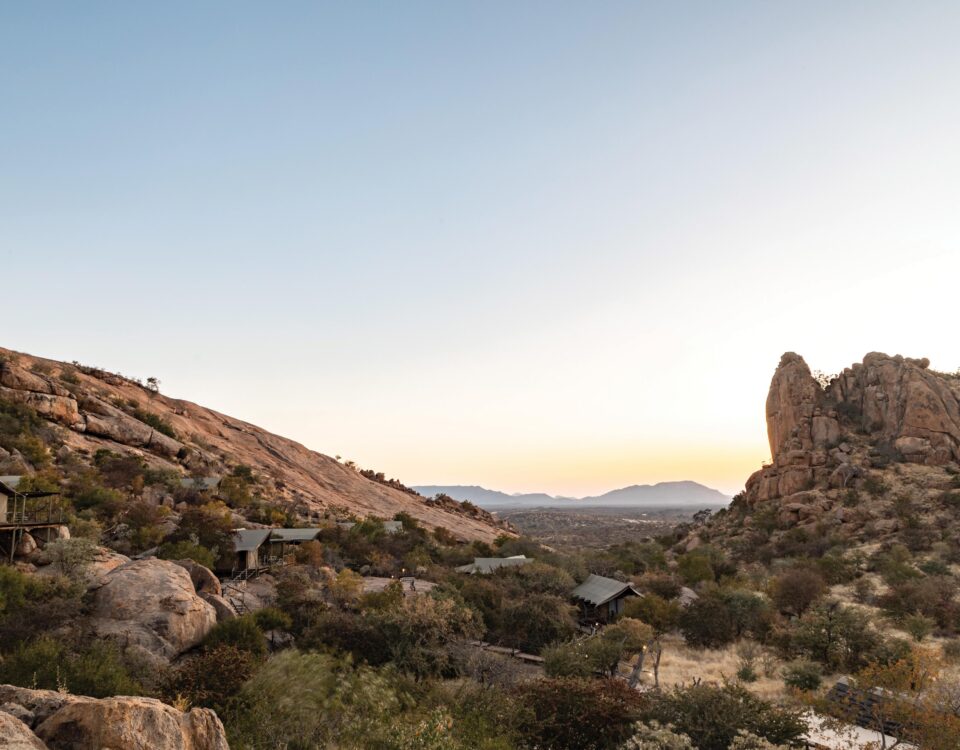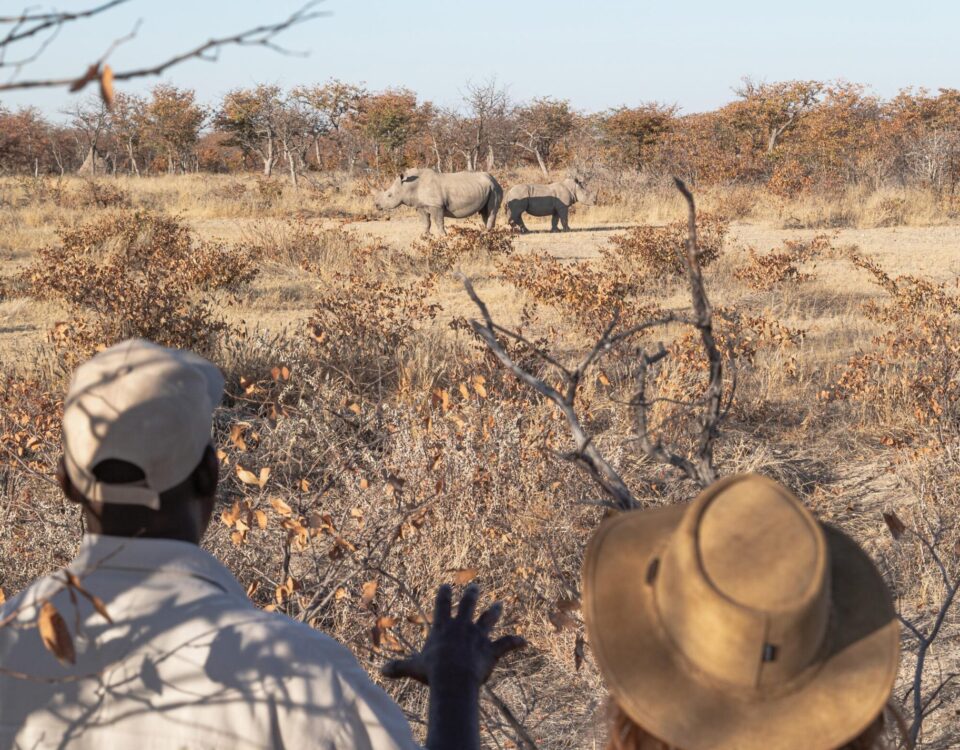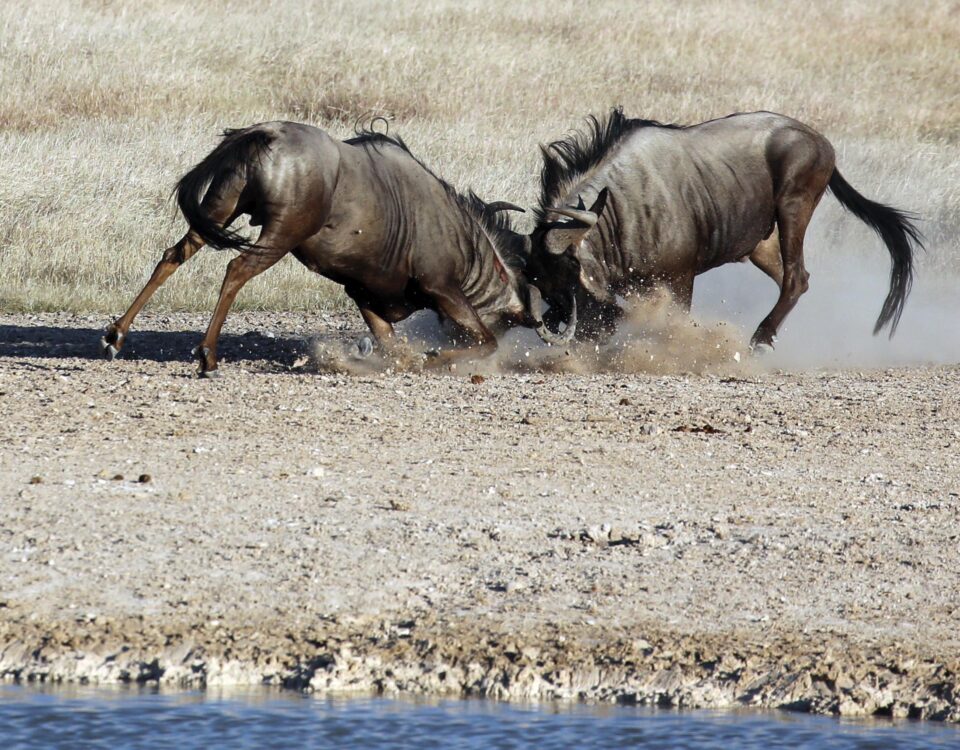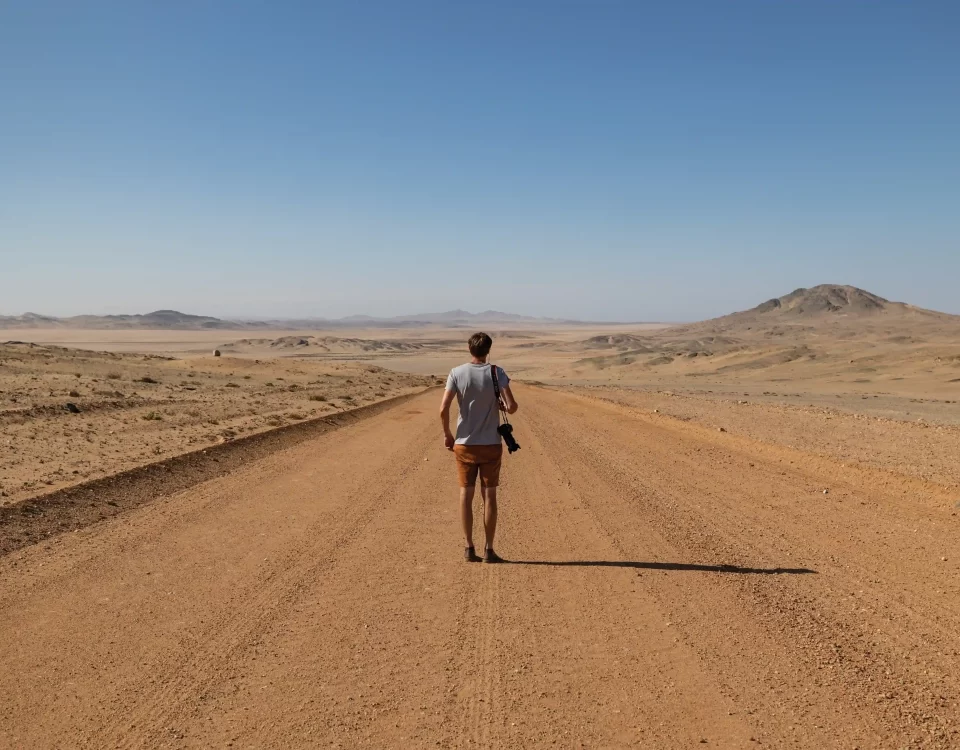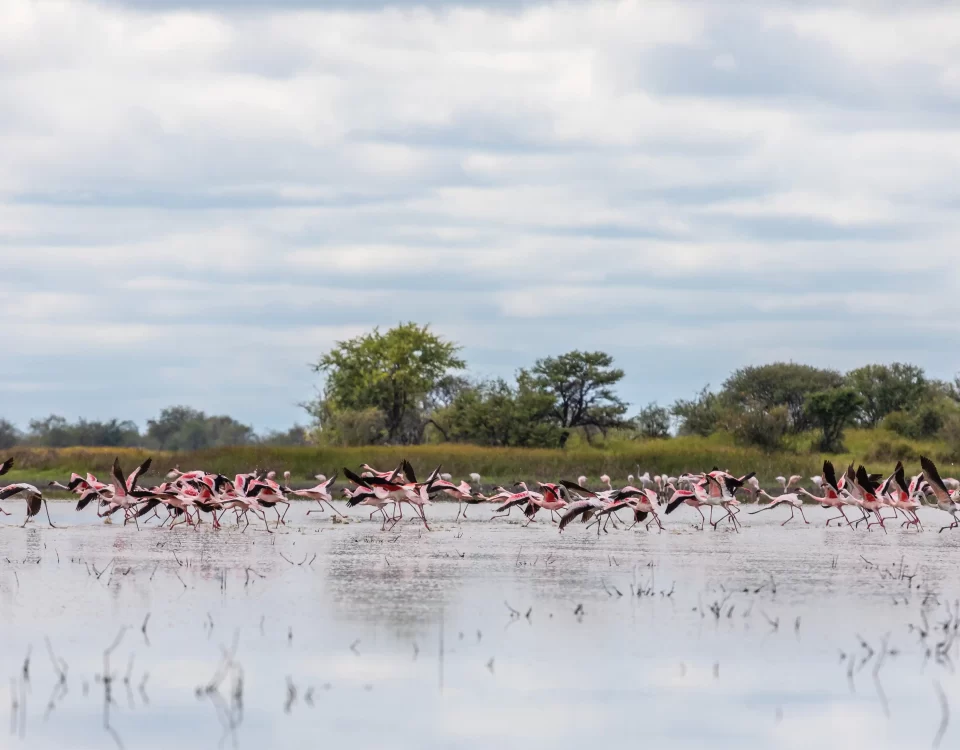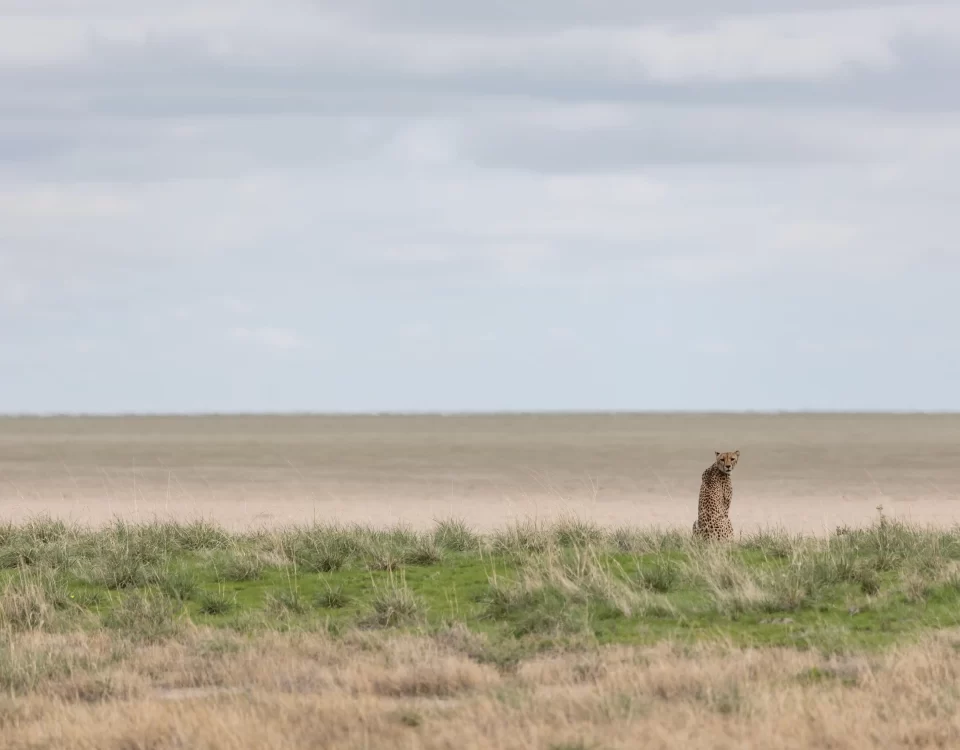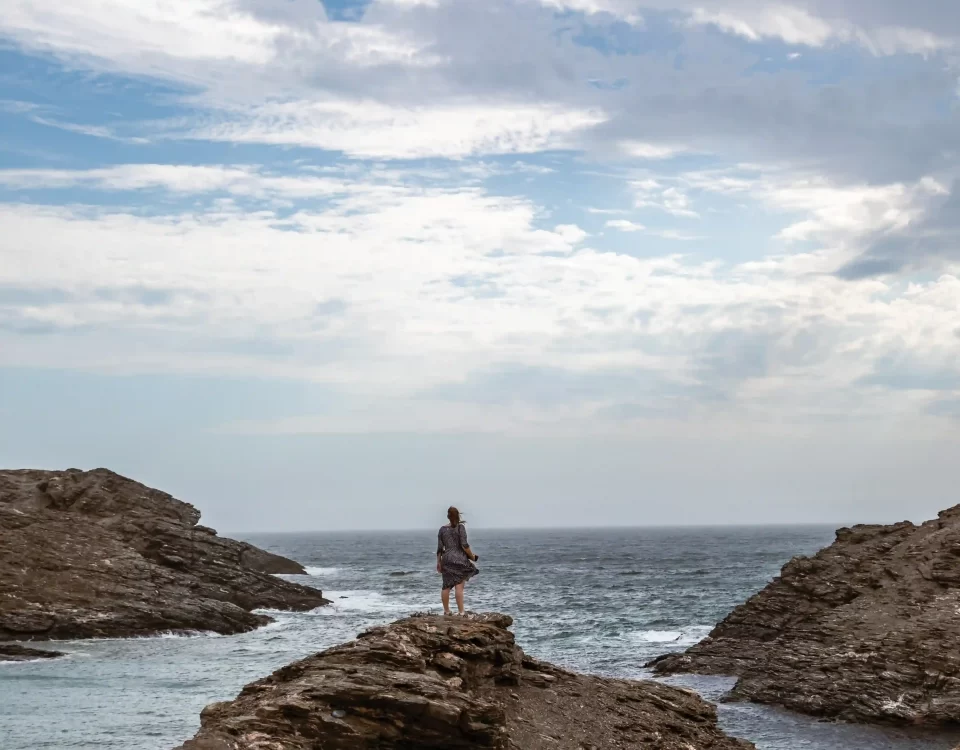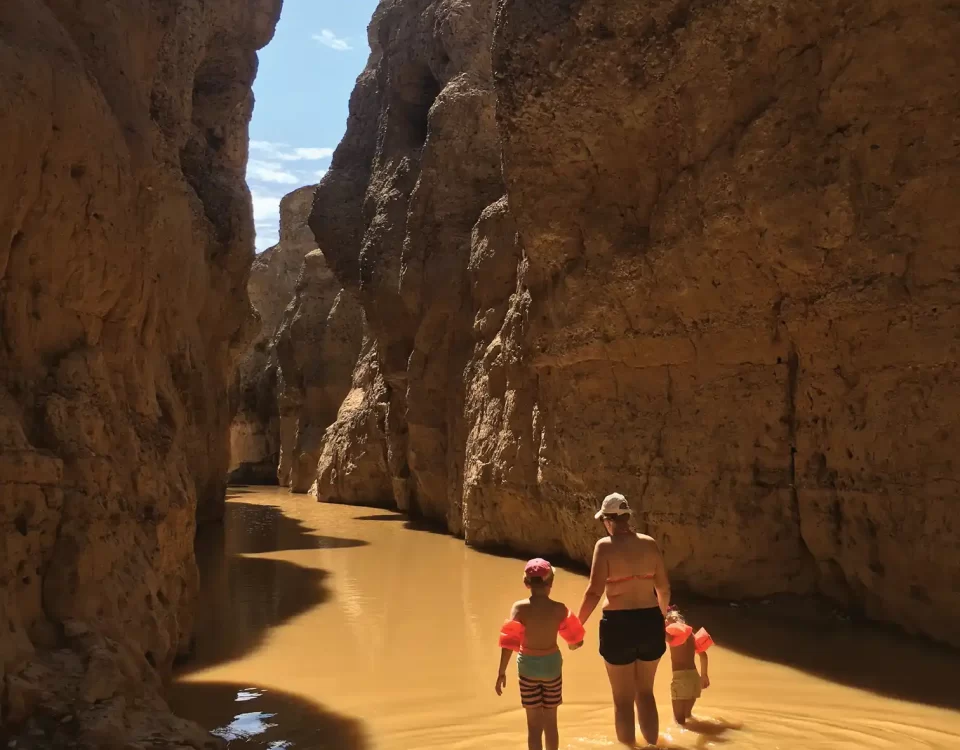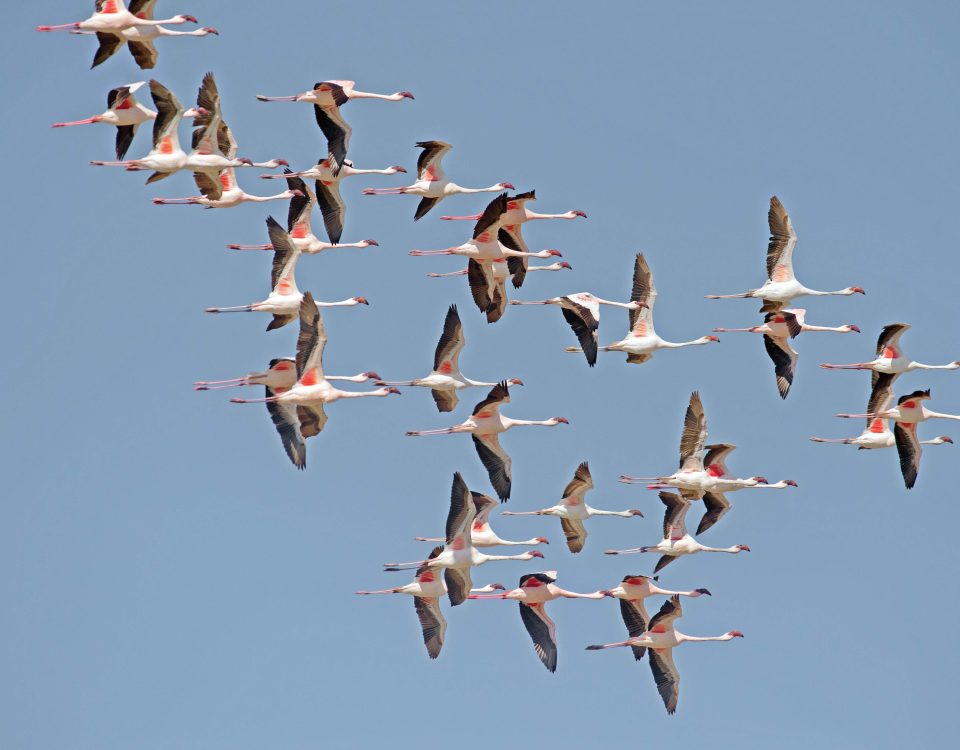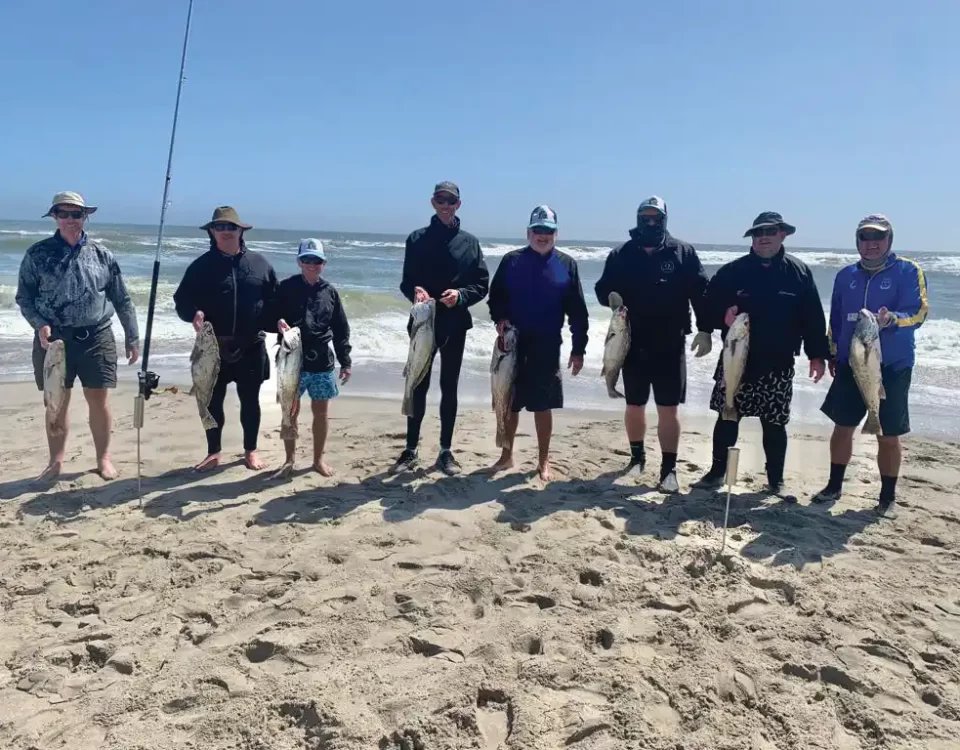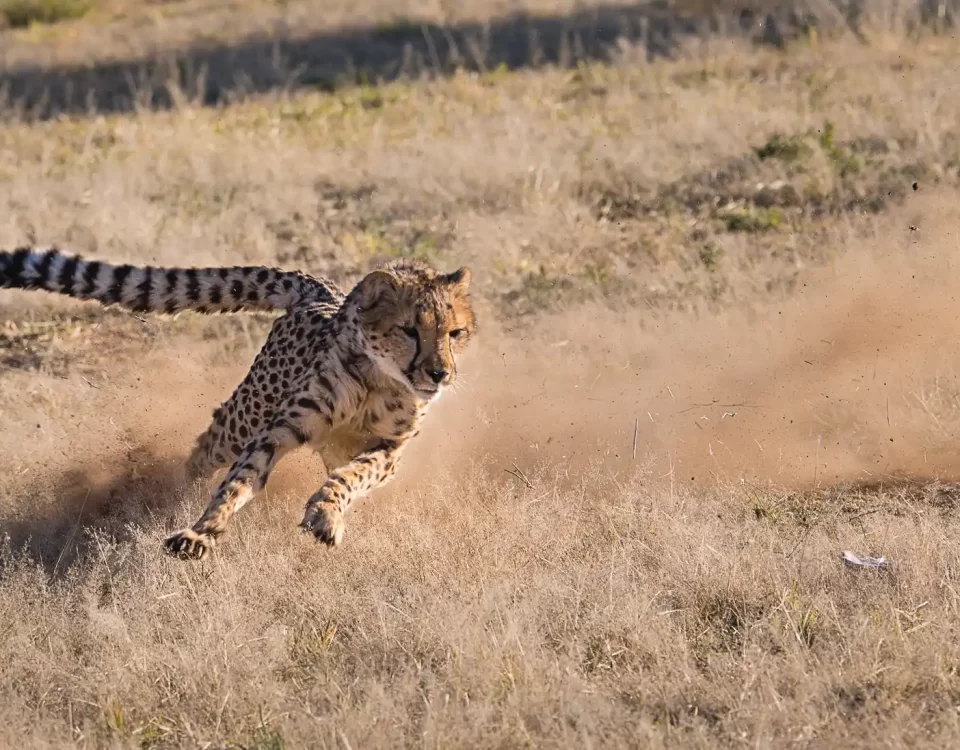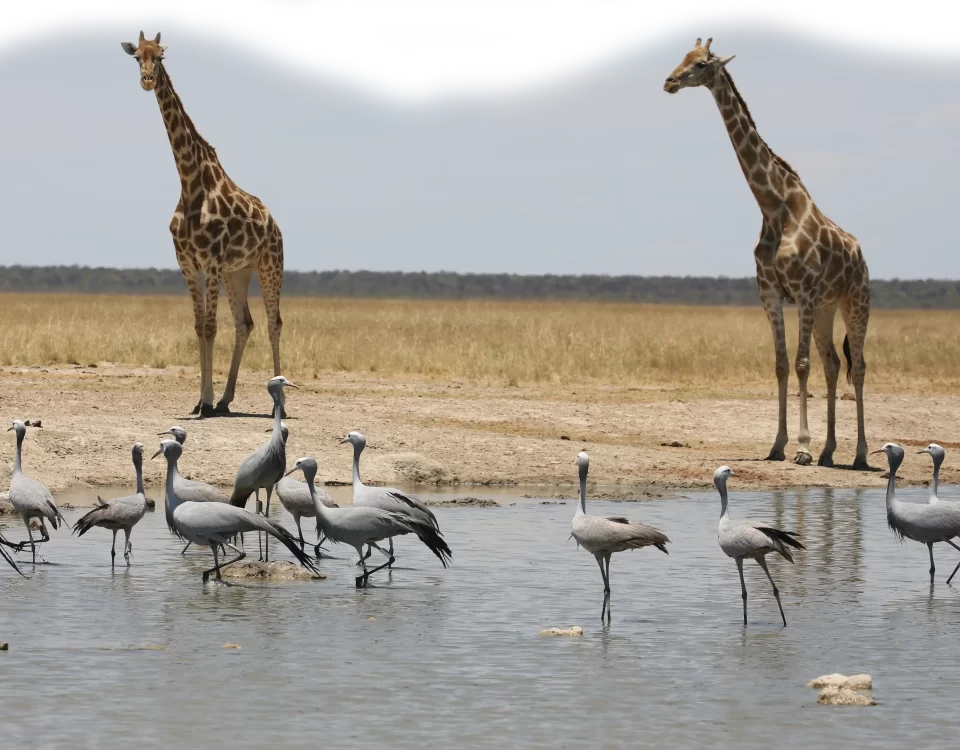September 1, 2022
Situated some 10 kilometres west of Omaruru and roughly a two-hour drive from Windhoek, Erongo Wild invites guests to become absorbed by the natural beauty of the Erongo Mountains. It is a place brimming with life, which is evident as soon as you arrive. You are immediately surrounded by the calls of White-browed Sparrow-weavers, African Red-eyed Bulbul and a chorus of Rosy-faced Lovebirds – sounds that will become synonymous with Erongo Wild.
September 1, 2022
Crisp winter air hangs over the horizon, creating a soft white filter for every tree and hill. Looking down, you see a veil of yellow and orange mopane leaves crushing softly under your feet. In a single file line, you tread lightly, one foot in front of the other, so as to not disturb the life that surrounds you, or the black rhino spotted at the lodge’s subtly lit waterhole the previous night.
September 1, 2022
Territorial blue wildebeest bulls can be spotted at several waterholes in Etosha National Park. Establishing their territory around these important drinking places is like hitting the jackpot for these bulls because the females have to come to the water at least once a day. This is the opportunity to mate with many females, but it is equally exhausting to keep all the rivals at bay. For intruding bulls this is also a problem because they will be chased away by the “owner” of the territory.
September 1, 2022
The crisp morning in July does little to dampen our excitement: we are leaving on a game drive through the Etosha Heights Private Reserve. As we descend the steep hill leading away from the lodge, the sun, not yet visible, starts to change the colours of the surrounding bush. With the change of light the temperature drops and adds a little extra bite to an already sharp winter's morning.
September 1, 2022
Visiting Etosha National Park in early May this year we encountered what might be a once-in-a-lifetime experience: watching a flock, or rather flocks, of Red-billed Queleas at Goas waterhole one morning coming in for their daily drink. Apparently this usually happens twice a day, but my fellow waterhole visitors in the car got a bit fed up with the once-in-a-lifetime experience after a few hours and I had to leave the birds on their own for the rest of the day, to my utter dismay.
June 29, 2022
What enticed men to leave their homes in Europe for a far-off German colony on the African Continent to dig through burning gravel under the relentless sun of the Namib Desert for a gemstone made of carbon arranged in a crystal structure? Many romantic stories are told citing various reasons, but in actual fact these men were motivated by one thing alone – greed.
June 29, 2022
These thousands of birds on the water in the middle of nowhere are standing in the shallow water of the pan in the Naye Naye Conservancy close to the north-eastern border with Botswana.
June 29, 2022
Stepping out of routine has never been this rewarding, and the eastern part of the Great White Place is a worthy addition to every traveller’s Etosha itinerary.
June 1, 2022
We’re exploring the Lüderitz Peninsula, the aforementioned Toyota making easy work of the well-laid-out salt routes and dirt tracks and acting as a very adequate barrier between us and the wind.
June 1, 2022
It is our tradition, whenever the Sesriem Canyon fills with water, to go and swim there. In January the time had come again.
June 1, 2022
I wonder if any of those pioneers in the early 1900s ever saw Barlow’s
Lark (Calendulauda barlowi) at Pomona, or the Dune Lark (C.
erythrochlamys) in the dunes near Lüderitz? Looking at the barren
‘killing fields’ those diamond hunters left behind as memories for
later generations, I doubt it very much. I suppose the diamond’s
blinding effect on your eyes has the same effect on your mind. In
the end, it’s the larks that are still around, and not those diamond
hunters.
June 1, 2022
Not many people can claim that a rain frog was named after them – even fewer can assert that they were once almost arrested for searching for one – in a desert of all places. Let me introduce you to the world of frog expert Vincent Carruthers.
June 1, 2022
Namibia is well known for its diverse, vast landscapes and abundant ocean life. The latter make it a premium fishing destination.
June 1, 2022
When American scientist Dr Laurie Marker launched the Cheetah Conservation Fund (CCF) in 1990, she had no idea where this new adventure would take her. A zoologist from California, she learned about threats to a declining wild population while conducting in situ research in Africa in the late 1970s and through the 1980s. Dr Marker routinely travelled to Namibia and other cheetah-range countries from her positions with Wildlife Safari and the Smithsonian Institution’s National Zoo to study the habits of the world’s fastest feline. But it’s what she learned about human behaviour that shocked her. Habitat loss, loss of prey, and conflict with livestock and game farmers put cheetahs on the fast track to extinction. Livestock and game farmers were shooting, trapping and removing hundreds of cheetahs each year – more because of perceived threats than actual predation. She realised if no one would soon intervene, the cheetah might be lost forever.
June 1, 2022
According to unconfirmed reports the Namibian blue crane population is seriously threatened because of poaching.

